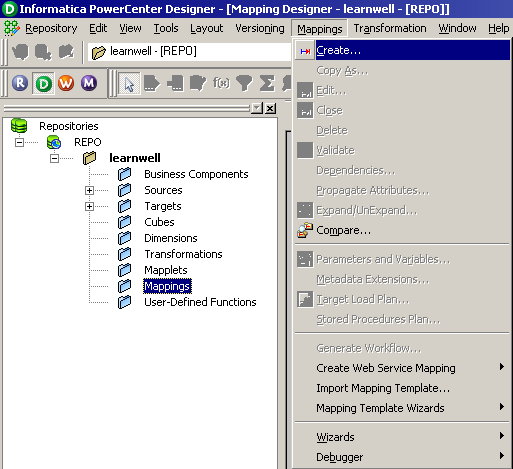Creating a mapping and using transformation features
In the earlier section, we learned about all the prerequisites for creating mapping. Mapping is a structural flow of data from the source to the target through transformations.
To understand the basic steps of creating mapping, let's start by creating a pass-through mapping. A pass-through mapping inserts all the source rows into the target without any modification. A pass-through mapping is a simple flow from source to target without any changes in data.
We will use the EMPLOYEE Oracle table as the source and the TGT_EMPLOYEE as the target for creating a pass-through mapping.
In the following steps, you create a mapping and link columns in the source EMPLOYEES table to a Source Qualifier transformation.
- Go to
Tools|Mapping Designer|Mappings|Create...to create a new mapping:

- In the
Mapping Namedialog box, enterm_PASS_THROUGH_EMPLOYEES, and click onOK.

- Drag the
EMPLOYEESsource definition into the Mapping Designer workspace. - The source...



























































